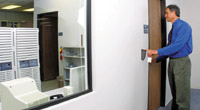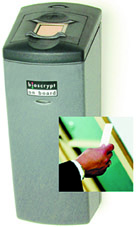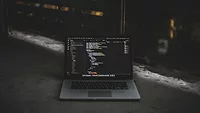Stepping Up Security
This is good news for the security industry. The market is open and looking for a host of new systems and technologies. SECURITY magazine recently spoke with some key players in the industry and asked for their perspective.

In the Spotlight
Biometrics is one technology that has been thrust into the spotlight since the September 11 attacks. Previously, many industries had shown interest in this type of technology, yet in many respects, it was seen as an "extra" as opposed to a necessity. Now, the tide has turned."People are much more aware of security considerations. There is a much higher lever of seriousness in the level of discussions with potential customers," says Colin Soutar, chief technology officer, Bioscrypt, Sherman Oaks, Calif. "People would previously be interested, but now they are more serious in wanting the technology. They also understand more what each piece of the puzzle plays in the overall scheme. We find that when we talk with people now, they have a better understanding of how biometrics can help their security systems, rather than seeing it as just a unique and interesting thing."
Biometrics will not serve as a replacement technology, but it will serve as an enhancement. Layered with existing access control systems, it provides an exceptional level of security for both the public and private sectors.
"We are really focused on the integration into existing infrastructures," says Soutar. "Within the physical access environment, we support the existing standards. There are various standards for presenting information in to a door access system and we support all of those within our devices. They exist as substitute devices for other types of mechanisms that can be deployed within a security infrastructure. It is very easy installation and integration procedure. Within the network environment, we have played a significant role in the definition of what is called application-programming interface (API), and that allows application developers and providers to easily write applications that incorporate biometrics into their solution."
Airports-which regularly employ the use of biometrics-have been under heavy scrutiny lately. In the past, airports have used biometrics to secure various areas. Now, passengers will be able to use biometrics as well.
"One trend that I am seeing in relation to 9/11 is that of the expedited traveler," says Soutar. "Someone who travels a fair amount would volunteer for a program and carry a card that proves they have been through all the screening with immigration, etc., and they are who they say they are, and then they prove it to the systems using the fingerprint. I think 80-90 percent of those who travel regularly will enroll so they can move quickly, securely and conveniently through while allowing officials enough time to look at the people who are not registered. It is a concept that makes sense. People are using biometrics for a positive process."
Biometric technology has been around for years. It's really a case of people coming to understand the need for it.
"Security is a commodity that you never really are sure that you need until an unfortunate incident occurs. But the industry and the procedures and the capabilities have been around for a long time. We have been quietly putting it out there, and we are in a good position to meet the demand," says Soutar.

About Face
Another advance for enterprise access is the coupling of access control technology with CCTV technology. This integration is proving to be an effective security combination."It is important to be able to associate video with events of interest. One way to do that is to integrate it with other systems, such as access control," says Larry Bowe, director of product management and alliance development, Loronix Information Systems, Inc., Durango, Colorado.
Perhaps the best example of this pairing is with facial recognition technology. Loronix has recently entered into an agreement with Visionics, a leading manufacturer of facial recognition systems. Together, they have created a highly effective security management tool.
"Facial recognition has been in the press lately. We have entered into an agreement with Visionics to integrate their technology with the Loronix platform," says Bowe. "You could do a standalone Visionics system, but the advantage is you are leveraging the infrastructure that you have already made the investment in (for example, airports) and you are getting more value than just facial recognition. You can go back and search the stored video database for faces and see if there have been know criminals in the airport, and that is something that you cannot do with just a live system. The immediate need for airports is at the checkpoint. They need to be able to do a face scan, and they need to have a database of known criminals to match against."
The events of September 11 have encouraged people to focus on preventative technologies. Security directors are focusing on the total security package, not just surveillance. No one wants to wait until after the fact. Along with this, the public is becoming more tolerant of security measures. It's no longer a question of civil liberties, but a question of public safety.
Because of this, Loronix is responding to customer demand. They have developed the Behavior Track technology, which can recognize when there are people in certain areas. It can count people and see what speed and direction they are moving in and it can do this with vehicles as well. This could be extremely beneficial in an airport environment. And, while this technology was only in the development process pre-9/11, they have accelerated that development to try to bring it to market quicker.
"The software can recognize that more than one person has entered, and can send that data to a handheld device or the nearest security guard, someone who can take action," says Bowe.
The Loronix platform employs three important advantages. It has the ability to deploy a large system and is very scalable. The intelligence allows it to be proactive and prevent events with software that can alarm on suspicious behaviors. And, it is able to deliver the information in real time to people who can make decisions.
While many of these solutions do not provide an end to terrorism, they go a long way in quelling the fears of a wounded nation. For the moment, it will have to be enough.
Looking for a reprint of this article?
From high-res PDFs to custom plaques, order your copy today!






